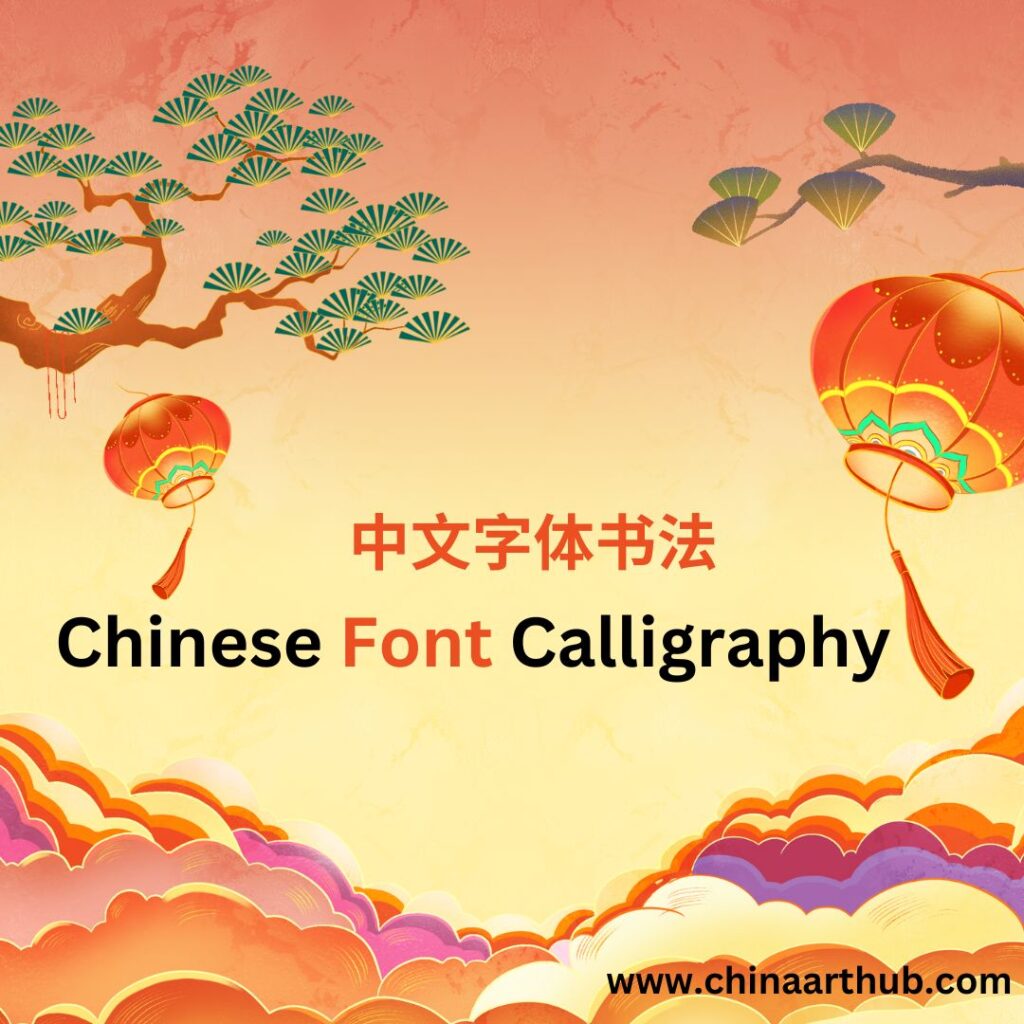
Chinese font calligraphy is not just a writing technique—it’s a living, breathing art form that reveals the very soul of Chinese culture. Each stroke, each curve, and each symbol in this style is packed with layers of meaning, steeped in tradition, and rooted in over 3,000 years of cultural evolution. From emperor’s decrees etched on bronze vessels to poetic verses inscribed on silk scrolls, Chinese font calligraphy has traveled through time, carrying with it the stories, philosophies, and expressions of generations.
In this article, we’ll dive into the intricate world of Chinese font calligraphy, uncovering its styles, symbolic depths, and how it continues to shape visual storytelling today. Whether you’re a designer, an artist, a historian, or simply a curious soul, you’ll discover how this calligraphic style blends ancient heritage with modern identity in unexpected ways.
A Legacy Carved in Ink
The history of Chinese calligraphy dates back to the Shang dynasty (1600–1046 BCE), where the earliest forms of Chinese writing—oracle bone script—were carved into turtle shells and bones. These early forms laid the foundation for later font structures in Chinese font calligraphy.
As Chinese characters evolved from pictographs into ideograms and later stylized forms, the idea of “font” took root—not in the digital sense, but as a way to express tone, intention, and emotion through brush techniques. The term Chinese font calligraphy today encapsulates these diverse styles—each with unique line structures, brush pressure, and aesthetic rhythm.
Five Classical Calligraphy Styles
Chinese calligraphy isn’t a single fixed format. It branches into multiple calligraphic “fonts” that artists choose based on mood, message, or cultural significance. These five classical script types make up the core of Chinese font calligraphy:
-
Seal Script (篆书 – Zhuànshū)
The most ancient style, seal script has an elegant, almost ornamental quality. Used on seals and formal documents, it’s dense with symbolic intent and symmetry. -
Clerical Script (隶书 – Lìshū)
Developed during the Han dynasty, this script marked a shift toward practicality while retaining stylization. The wide, sweeping brushstrokes are often used in calligraphy to represent authority or gravitas. -
Regular Script (楷书 – Kǎishū)
Perhaps the most legible and structured style, regular script is the go-to for learners and official documents. Fonts based on this calligraphy type are common in contemporary Chinese typography. -
Running Script (行书 – Xíngshū)
A semi-cursive form that flows smoothly between characters, this font style conveys energy, elegance, and spontaneity. -
Cursive Script (草书 – Cǎoshū)
The wild child of Chinese font calligraphy. Often hard to read, this style emphasizes artistic expression over legibility. It is both a challenge and a favorite among master calligraphers.
Each of these styles contributes to the broader definition of Chinese font calligraphy, acting as visual signatures of the times and personalities that created them.
The Symbolic Language of Strokes
Chinese font calligraphy is more than handwriting—it is symbolic storytelling. A single character might symbolize power, luck, harmony, or grief, and the way it’s written can enhance or alter its message.
For instance, the character 福 (fú), meaning “fortune” or “blessing,” is often written in rounded, flowing strokes during Lunar New Year to invite good luck. In contrast, calligraphy of the word 静 (jìng, meaning “quiet” or “serenity”) might adopt a sparse, angular style to evoke calmness and restraint.
Designers and artists working with Chinese font calligraphy need to understand these nuances. Choosing the wrong font style for a word can change its emotional context or even seem culturally tone-deaf. This is why many turn to traditional calligraphers for inspiration when designing anything from brand logos to tattoos.
The Brush as a Voice
Unlike Western penmanship, which often values consistency, Chinese font calligraphy celebrates variability. The brush is not a passive tool—it’s an extension of the writer’s spirit. A trembling stroke might suggest sorrow or reflection, while a bold, sweeping line could signify courage or dominance.
Ink tone, brush pressure, paper absorbency—every detail matters. A calligrapher may spend hours preparing mentally before committing ink to paper. That meditative process is embedded into the final product, making Chinese font calligraphy a visible trace of invisible emotions.
Even digital Chinese fonts strive to mimic this authenticity. Software designers study traditional works to create fonts that feel handwritten—even when rendered on a screen. Whether for film titles, museum exhibitions, or website headers, these digital versions aim to capture the heartbeat of brushwork.
Chinese Font Calligraphy in Modern Use
Today, Chinese font calligraphy has found new life in graphic design, branding, fashion, and fine art. You’ll find it on book covers, murals, coffee shop signage, and even luxury product packaging. Why? Because it instantly evokes elegance, heritage, and sophistication.
Brands such as Li-Ning and Chow Sang Sang incorporate custom Chinese calligraphic fonts to connect with cultural roots while standing out visually. Street artists, too, are fusing graffiti styles with traditional strokes—bridging ancient and urban aesthetics.
Typography design studios worldwide are creating new digital fonts inspired by historical calligraphy scrolls. These fonts are used not only in Chinese-speaking regions but globally, wherever there’s appreciation for cultural depth and visual artistry.
Even in education, students of Chinese language often study calligraphy to gain a better grasp of stroke order and structure. Learning Chinese font calligraphy helps learners internalize the language in a tactile, intuitive way.
Reading Between the Lines: Cultural Depths
Understanding Chinese font calligraphy offers a deeper insight into Chinese thought systems. Confucianism, Taoism, and Buddhism all influence calligraphic styles. A Confucian scholar might choose regular script for clarity and balance, while a Taoist may prefer flowing cursive to echo nature’s spontaneity.
Poems, couplets, and philosophical quotes are often written in styles that enhance their themes. A Taoist poem about flowing water might be written in cursive script that visually mimics waves. In this way, Chinese font calligraphy becomes a mirror of philosophy.
In scroll paintings, calligraphy is often integrated with landscape or figure art. The choice of font, its placement, and even ink density become essential to the storytelling. One scroll may contain a mountain scene and a poem written in seal script—linking the permanence of nature with the weight of tradition.
Creating With Respect and Purpose
If you’re planning to use Chinese font calligraphy in a design, product, or creative project, the first step is to respect the culture it comes from. This isn’t just about aesthetics—it’s about honoring centuries of thought, technique, and expression.
Engage with native calligraphers. Study classical texts. Learn the difference between artistic calligraphy and everyday handwriting. And most importantly, choose your font styles with intention. A word like “peace” or “dragon” can look completely different—and mean different things—based on how it’s styled.
For businesses, using Chinese font calligraphy in branding can be a powerful way to tap into cultural storytelling. For artists, it opens new dimensions of emotional depth. And for learners, it bridges language with feeling in a unique, unforgettable way.
Final Thoughts
Chinese font calligraphy is not just a remnant of the past—it’s an active, evolving dialogue between brush and mind, tradition and innovation. Whether viewed on ancient silk scrolls or modern touchscreens, its graceful complexity continues to captivate and inspire.
If you’re a designer seeking authenticity, a language learner diving into characters, or a cultural explorer curious about China’s rich artistic tapestry, immersing yourself in Chinese font calligraphy offers more than just visual appeal—it opens a pathway into meaning itself.
So the next time you see a Chinese character scrawled elegantly across a banner or inscribed on a scroll, look closely. There’s more than ink behind those lines—there’s history, emotion, and a story waiting to be understood.


